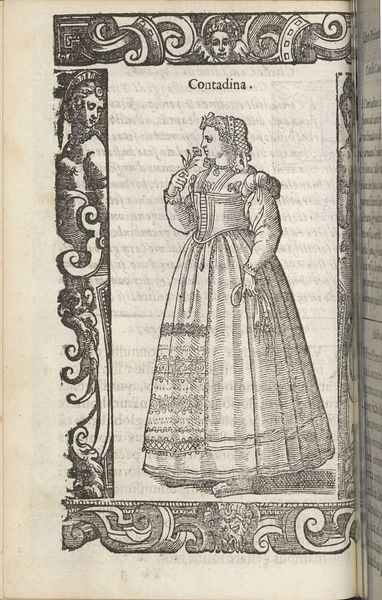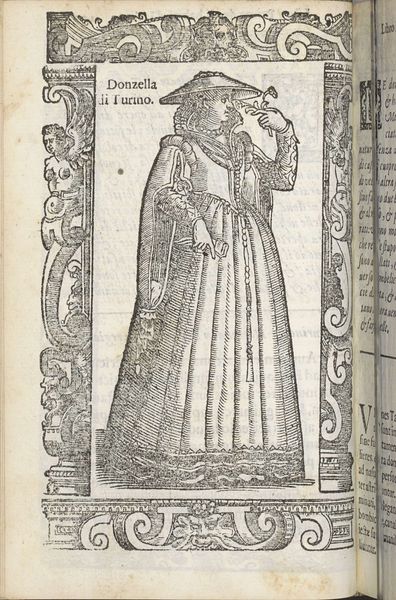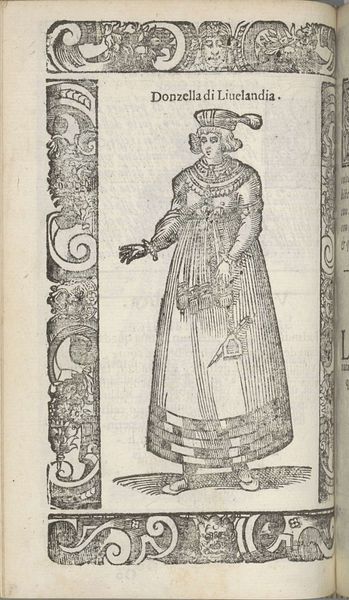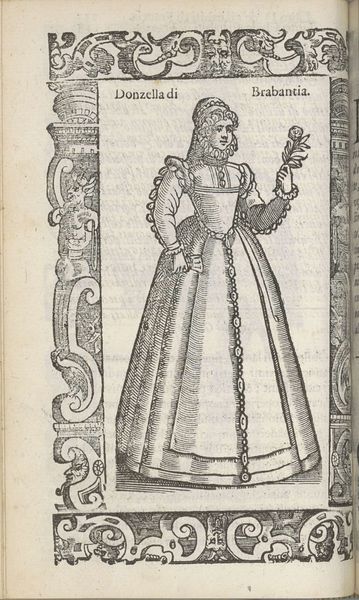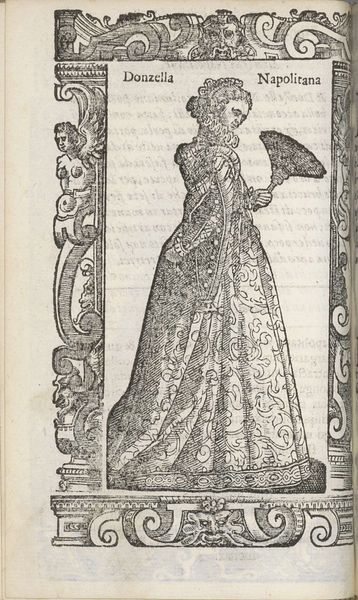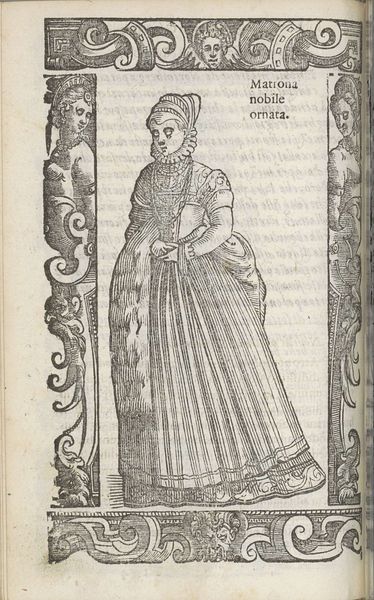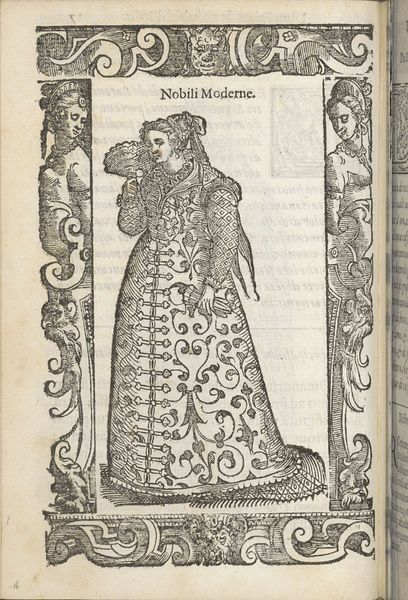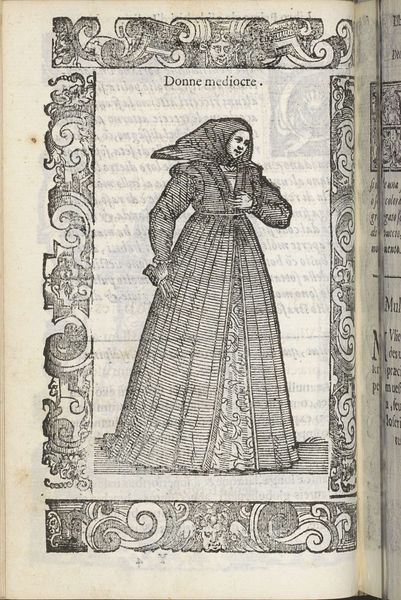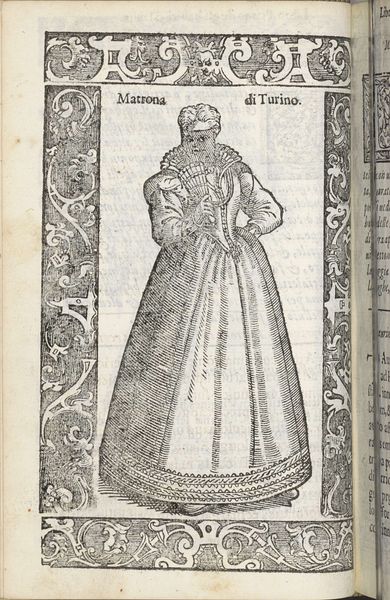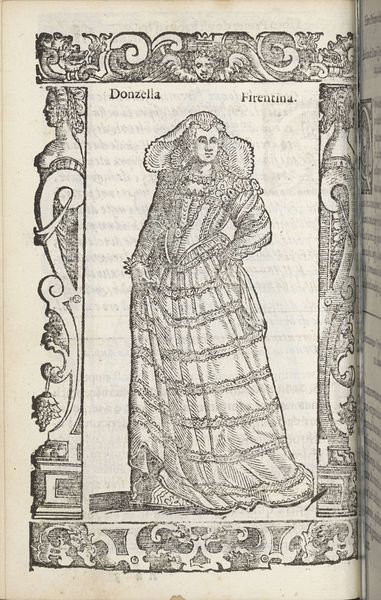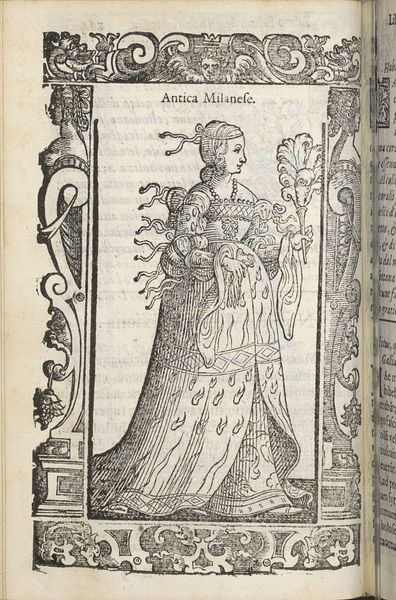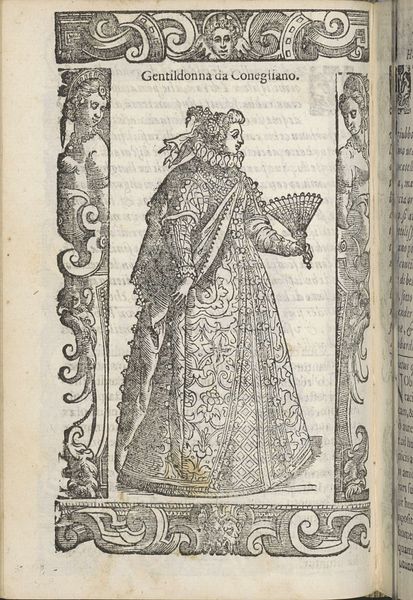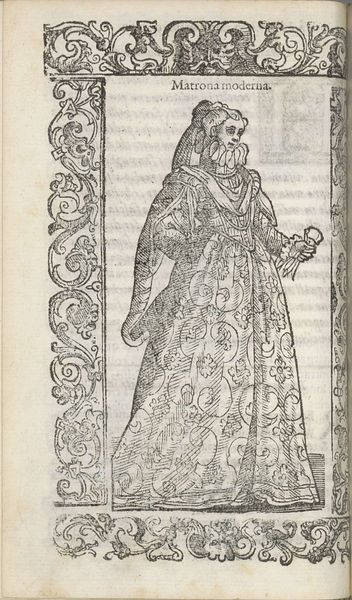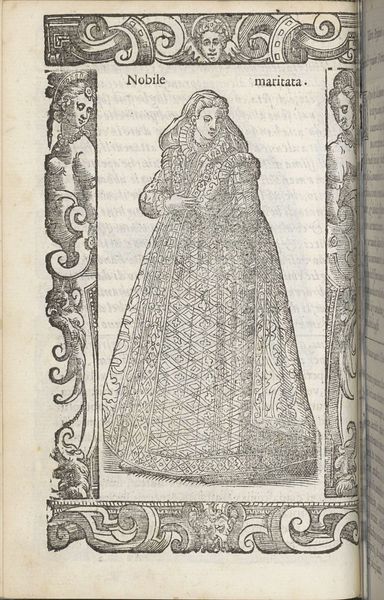
drawing, print, ink, pen, engraving
#
portrait
#
drawing
#
pen drawing
# print
#
ink
#
pen
#
genre-painting
#
italian-renaissance
#
engraving
Dimensions: height 167 mm, width 125 mm
Copyright: Rijks Museum: Open Domain
Curator: Looking at this drawing, “Plebea Genovese,” by Christoph Krieger from 1598, what’s your immediate take? Editor: There’s an interesting tension here. On the one hand, the meticulous detail, particularly in the woman’s dress, is captivating. However, the rigid lines and somewhat flattened perspective feel… constrained. Curator: Krieger created this work as part of a broader cultural trend—artists seeking to document and categorize various social classes. Think of these "genre paintings" as early forms of sociological observation. The "Plebea Genovese" represents a commoner from Genoa, her dress reflecting her station in life. Editor: Yes, and it’s interesting how the patterns of her skirt create a striking visual rhythm, directing our eyes downwards, and that little satchel, dangling so casually, breaks that otherwise rigorous ordering of form. The pen strokes used here remind me of architectural drafting, which aligns with that almost scientific attempt at categorizing and documenting life. Curator: Exactly! Krieger, in essence, used the printing press to disseminate information, shaping perceptions about different people across geographic and social divides. And there’s a deliberate contrast with the ornateness surrounding her image, a frame decorated with classical motifs, seemingly elevating the subject even as it marks her as ‘other.’ Editor: The face, though… I find it quite neutral. A lack of emotion. Could this be Krieger focusing on the clothes as semiotic tools? The dress tells us more about the figure than the figure tells us about the person? Curator: I agree. The print serves as a record, but it also inevitably perpetuates stereotypes, defining this woman not by her individual personality, but by her clothing and class. These early depictions influenced how people perceived each other and how society was structured. Editor: Fascinating. It highlights the formal control exerted over representation and how meaning is encoded not just in what is shown but how it's presented and circulated. Curator: It provides a stark lesson in the power of visual culture, its potential to both illuminate and to reinforce power structures. Editor: Definitely food for thought, next time I’m assembling an image for a publication.
Comments
No comments
Be the first to comment and join the conversation on the ultimate creative platform.
